
Email Marketing Without Fatiguing Conscious Consumers
by Charanjeev Singh
How to build trust, reduce inbox overload, and engage with intention
Email marketing is a powerful tool. It lets you speak directly to your audience, without relying on ever-changing social media algorithms. For conscious consumers, the inbox is even more sacred.
They want to hear from you, but only when it’s relevant, respectful, and aligned with their values.
So how do you stay present without becoming a burden?
A better starting point is to step back and unpack email fatigue itself, why it happens, and why people choose to unsubscribe.
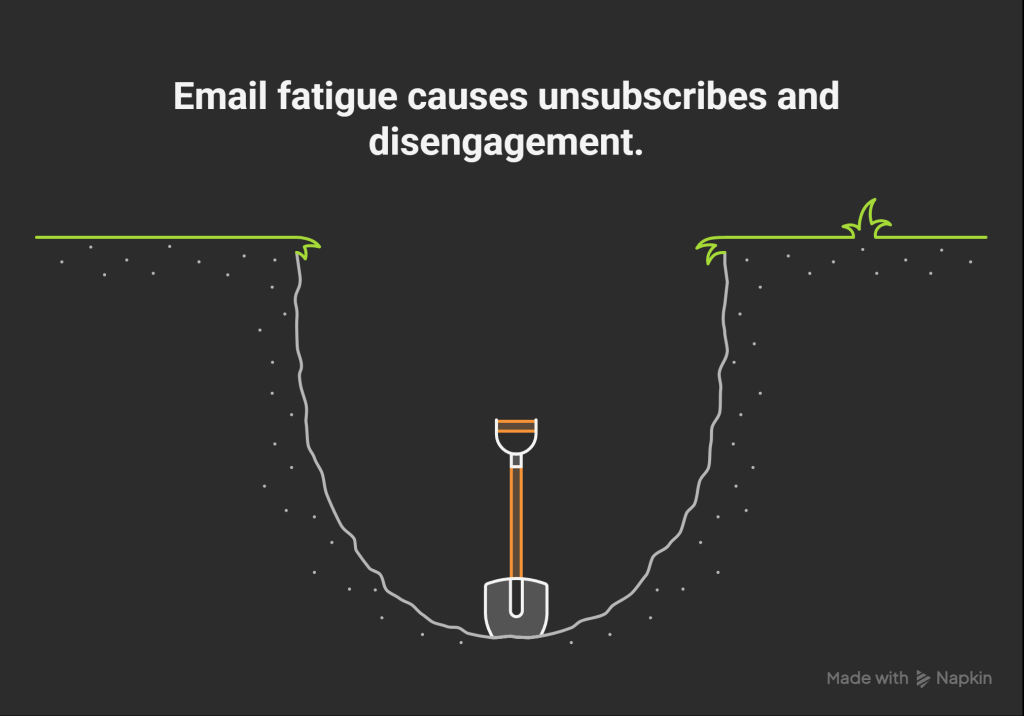
What is email fatigue?
Email fatigue, also known as inbox fatigue, occurs when subscribers feel overwhelmed by the frequency, irrelevance, or tone of the emails they receive. It leads to lower engagement, more unsubscribes, and ultimately, lost trust.
According to Campaign Monitor, the top reasons people unsubscribe are:
- Receiving too many emails
- Irrelevant or misaligned content
- Misleading subject lines or copy
It’s not just a marketing issue; it’s a relationship issue.
And for values-led brands, nonprofits, and B Corps, relationships are more important than brands driven by profit.
That’s why it’s important to frame your approach with clarity and respect, because reducing fatigue starts with setting expectations and gaining permission.

How to reduce email fatigue (and keep people subscribed)
Email fatigue isn’t solved by simply sending fewer emails; it’s about how you show up. Approaching your audience with respect, clear expectations, and genuine value lays the foundation.
Framing it this way makes the upcoming steps feel less like tactics and more like practical ways to nurture trust and sustain engagement.
1. Lead with Permission and Clarity
When someone signs up for your list, they’re inviting you into their inbox, a personal space. The best way to reduce fatigue is to be transparent about what they can expect. If they know exactly how often they’ll hear from you and what kind of content they will receive, they will feel in control and avoid frustration.
How to do it:
- Use double opt-ins: A simple process where users confirm their subscription after they sign up, giving them a chance to see what they’re agreeing to. It builds credibility and ensures that only people who want to hear from you are on your list.
- Set expectations early: In your welcome email, explain how often you’ll email them (e.g., weekly updates, monthly newsletters) and what kind of content they’ll get (e.g., product updates, community stories, impact reports). This can be a simple line like: “You’ll hear from us every week with updates on our sustainable practices and new product releases.”
- Be upfront about the benefits: Let them know how your emails will add value to their inbox. For example: “Our goal is to send you helpful, relevant information – no spam, just updates that align with your values.”
Subscribers who know the rhythm and purpose of your emails feel more in control. It prevents “surprise fatigue” from too many unexpected sends and helps keep unsubscribes low.
2. Let Your Subscribers Set the Pace
Every individual has a different threshold for the number of emails they can handle. Giving them control over how often they hear from you means that you’re respecting their preferences and reducing the likelihood of them feeling overwhelmed by too many messages.
Practical ways to do this:
- Set up a preference center: Let people choose the frequency (daily, weekly, monthly) and type of content they want (product news, community stories, impact updates). This simple choice can reduce list churn and build long-term trust.
- Offer control over content types: Allow subscribers to opt in or out of categories – like new product drops, sustainability initiatives, or customer stories. For example: “Choose your updates: New arrivals, Eco tips, or Monthly impact highlights.”
- Allow for temporary pauses: Some readers may want to pause emails for a while, give them an option to temporarily pause emails, or opt out of specific campaigns (like holiday promotions).
When people set the pace, they feel in control rather than bombarded. That sense of ownership makes your emails more relevant, lowers unsubscribe rates, and keeps engagement steady.
3. Segment Beyond Demographics
Segmentation helps you deliver content that’s personalized and relevant. Rather than sending the same message to everyone on your list, segment your subscribers based on behaviors, values, and past interactions with your brand. This approach increases the likelihood of engagement while reducing fatigue caused by irrelevant content.
How to do it:
- Behavioral Segmentation: Divide your list based on user actions, such as previous purchases, click behavior, and past engagement. For example, if someone has clicked on your sustainability updates in the past, send them more detailed information about your sustainable initiatives.
- Interest-Based Segmentation: Segment your list according to what your subscribers are most interested in. For example, if someone signed up for eco-friendly product updates, focus their emails on that topic. Alternatively, segment by customer lifecycle: first-time buyers vs. loyal customers.
- Demographic Segmentation: While behavioral and interest-based segmentation should be prioritized, demographic segmentation (e.g., location, age, etc.) can still help, especially if your products have a specific appeal depending on those factors (e.g., eco-friendly products for urban vs. rural areas).
By sending more targeted emails, you ensure your subscribers only receive information that’s relevant to them, reducing irrelevant noise and email fatigue. Relevance is key to maintaining engagement.
4. Focus on Value, Not Volume
The temptation to send frequent emails to stay in front of your audience is high, but quality trumps quantity. Too many emails can quickly lead to fatigue and an increased unsubscribe rate. Instead, focus on sending fewer, but more meaningful messages.
How to do it:
- Send only when you have something valuable to share: Ask yourself: Does this email provide genuine value to the subscriber? Is it worth their time? Focus on sending emails that offer helpful tips, important updates, or personal stories that resonate with your audience.
- Analyze your email performance: Look at open rates, click-through rates, and unsubscribe metrics. If you notice declining open rates or spiking unsubscribes, it’s time to reassess the frequency and content of your emails.
- Use drip campaigns: Instead of sending emails in bulk, set up a drip campaign that sends relevant, timely messages based on where the subscriber is in their journey. This allows for a sustained relationship without overwhelming them.
When you focus on sending value-driven emails, subscribers will appreciate your content and look forward to your messages. By sending fewer emails that have a real impact, you show respect for their time, which keeps engagement up and reduces burnout.
5. Write Emails People Want to Read
Storytelling adds meaning, while promotions add pressure. If your emails aren’t providing value, they’ll quickly get lost in a crowded inbox. Content that resonates with your audience, aligns with their values, and educates them is what builds trust and encourages engagement.
Content Ideas That Add Meaning:
Product care or reuse tips: Offer actionable advice that helps subscribers get more out of their products or services.
Impact statistics: Highlight measurable impact like CO₂ saved, meals donated, or projects funded.
Community or customer stories: Share testimonials, case studies, or stories about your brand’s impact.
Seasonal advice aligned with your mission: For example, eco-friendly tips for the holidays.
Example #1:
Bite sent a campaign showcasing how many plastic tubes they’ve helped customers avoid. It was clear, personal, and directly aligned with their mission.
Example#2:
Patagonia regularly shares repair guides and climate updates, turning their emails into educational content that reinforces their core values.
Tip:
Make every email about educating or adding value, not just selling. When your subscribers consistently receive content that aligns with their values and interests, they’ll be more likely to open, engage, and stay subscribed.
6. Email Automation That Supports, Not Overwhelms
Automation can reduce fatigue if it’s triggered by behavior rather than just time or guesses. When set up based on user action, automation helps ensure that each email feels relevant and timely, reducing the chances of annoying or overwhelming your subscribers.
How to do it:
Set up behavior-triggered emails: This can include welcome emails, cart abandonment reminders, or post-purchase updates. These emails are relevant because they’re linked to actions subscribers have already taken.
Welcome Series: This is your first opportunity to set the tone. Reinforce your brand’s mission, explain the value of subscribing, and outline what the reader can expect from your emails.
Browse/Cart Reminders: Send a soft touch. Gently remind them of what they left behind in their cart, but avoid pushing for a sale.
Post-purchase Emails: Send emails that show the impact their purchase made (e.g., “Your purchase helped plant 5 trees!”). These emails reinforce your mission and build a deeper connection with your brand.
Oracle Marketing Cloud confirms that trigger-based automation increases engagement and reduces email fatigue.
Bonus Tip:
Add opt-out options for sensitive moments (e.g., allow users to opt out of holiday-specific campaigns like Mother’s Day). This shows you respect their preferences and helps build long-term trust with your audience.
7. Respect Their Inbox- and the Planet
Sustainability should extend to your email practices as well. Overloading your subscribers with media-heavy emails or excessive content doesn’t just fatigue them-it also contributes to digital waste.
How to do it:
Optimize images: Compress images to reduce the size of your emails and avoid bloating. Large files take longer to load, contribute to carbon emissions, and create a negative user experience.
Regularly clean your list by removing inactive subscribers. According to USL Software, regularly pruning your list helps keep your audience engaged and reduces unnecessary sends.
Send only when necessary. Don’t send emails just to stay “top of mind.” Instead, send emails when you have genuine value to offer.
Track engagement via clicks, not just open rates, as privacy updates have skewed open rate metrics.
Footer Tip:
“Think before you print. Adjust your email preferences anytime.”
This reinforces your commitment to sustainability and your respect for the subscriber’s preferences. It’s a great way to align with your e-commerce sustainability metrics.
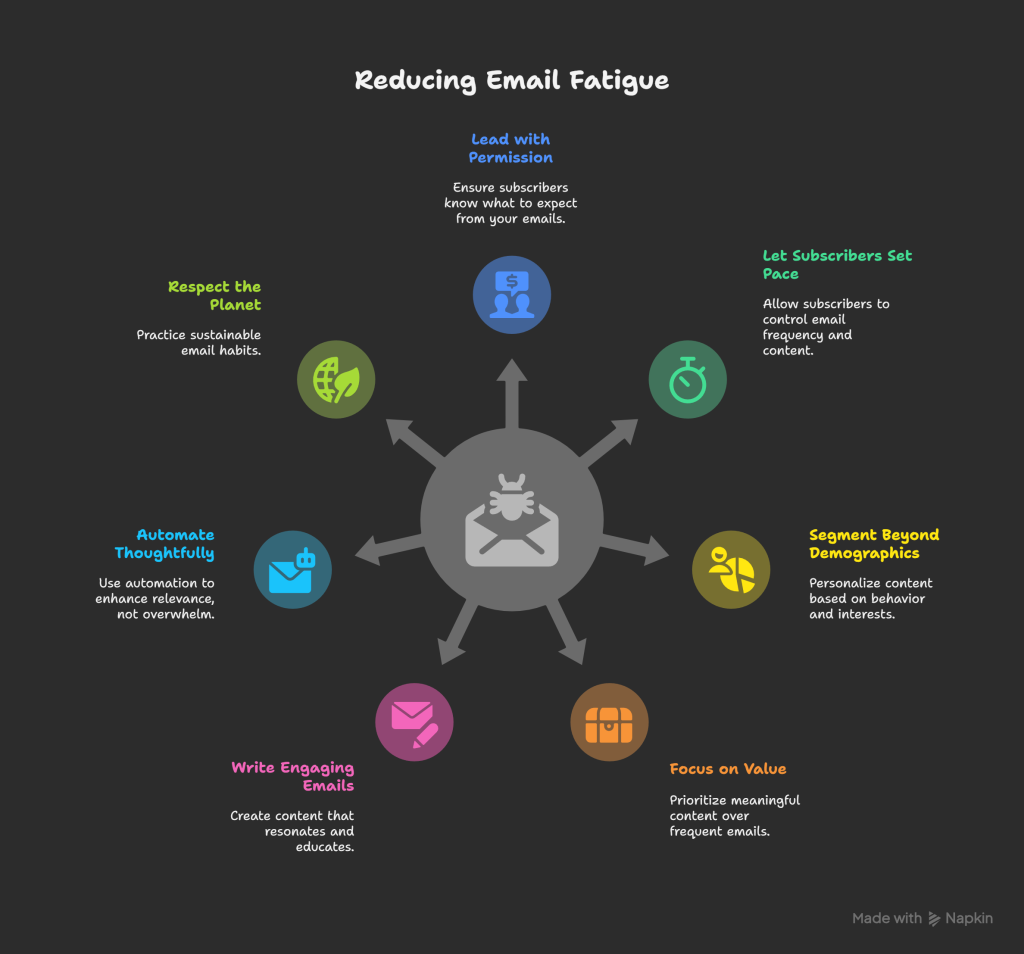
Why a trust-first email strategy reduces fatigue
Conscious consumers care deeply about how you show up, not just what you sell.
That includes respecting their time, data, and attention.
- Many users unsubscribe due to too many emails, irrelevant content, or excessive frequency.
- A single media-heavy email can emit up to 50g of CO₂ (Green City Times)
- Only 18% of marketers integrate sustainability into their actual email strategy, even though 64% say they prioritize it (BitQuirky)
If your brand stands for transparency and sustainable marketing principles, your email strategy should reflect that. Email isn’t just a channel, it’s a trust signal.
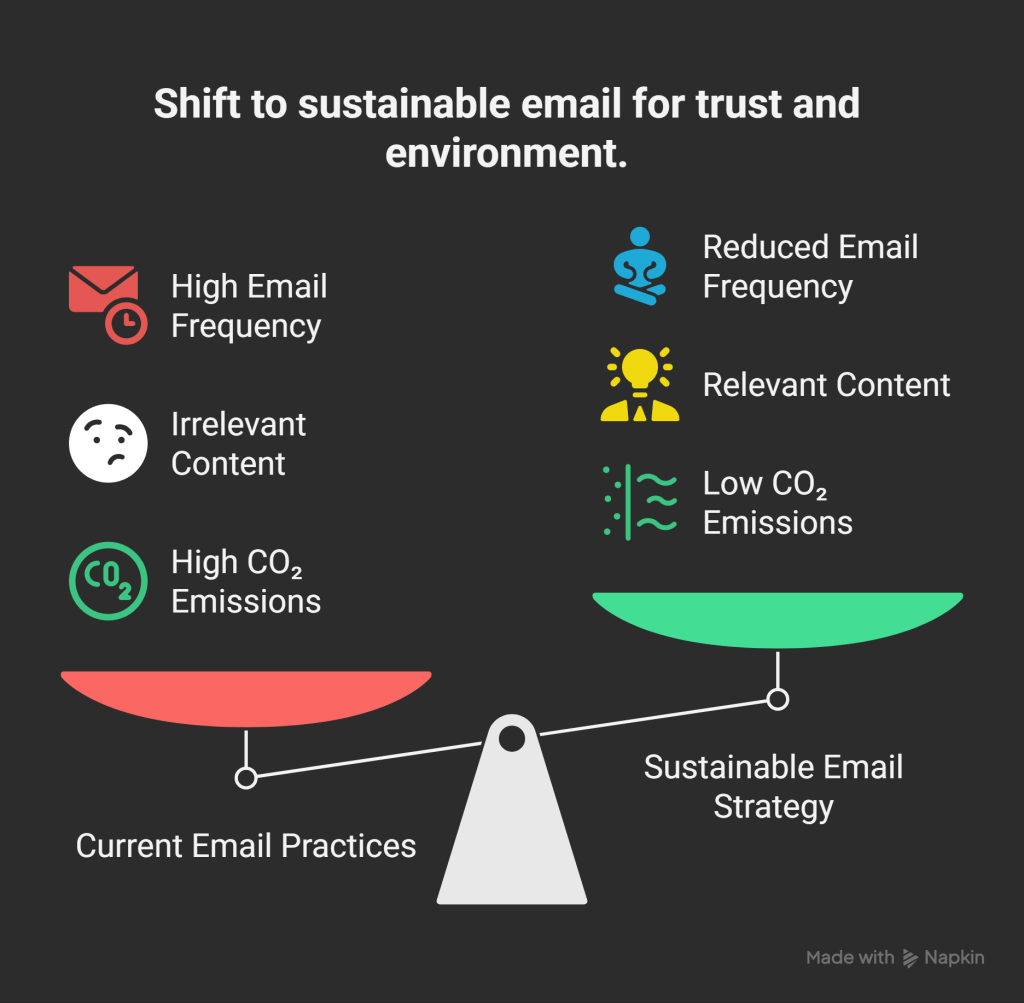
FAQ: What conscious brands ask about email fatigue
What is email fatigue?
Email fatigue is when subscribers feel overwhelmed or disengaged due to too many irrelevant or frequent emails. It often leads to unsubscribes or reduced engagement.
How do I know if my audience is fatigued?
Watch for spikes in unsubscribes, declining open rates, and low click-throughs. These are early signs of overload.
What’s the best email frequency for conscious consumers?
Usually 4-8 emails per month. Focus on sending when you have something valuable or meaningful to share.
Do nonprofits need to worry about email fatigue?
Yes. Donors and supporters may tune out if they feel over-asked. Balance fundraising with impact stories and gratitude.
Key Takeaways
Gain Consent and Set Expectations
- Use double opt-ins and clearly explain what content subscribers will receive and how often.
- Transparency from the start builds trust and reduces fatigue.
Let Subscribers Control Frequency
- Offer a preference center for frequency and content type.
- Allow temporary pauses or opt-outs for specific campaigns.
Segment Your Audience
- Segment by behavior, interests, and values rather than just demographics.
- Personalized, relevant content keeps engagement high and reduces unsubscribes.
Prioritize Value Over Volume
- Focus on sending fewer, high-value emails rather than frequent low-value messages.
- Analyze metrics like open rates, click-throughs, and unsubscribes to adjust your strategy.
Write Emails Subscribers Actually Want to Read
- Use storytelling, share impact stats, product care tips, and community stories.
- Educate and inspire your audience instead of just selling.
Automate Thoughtfully
- Use behavior-triggered emails for welcome flows, cart reminders, replenishment, and post-purchase updates.
- Allow opt-outs for sensitive campaigns to maintain trust.
Practice Sustainable Emailing
- Compress images, clean inactive subscribers, and send only when necessary.
- Track engagement via clicks, not just opens, and add footer reminders like “Think before you print.”
Watch for Signs of Fatigue
- Declining open rates, increasing unsubscribes, and subscriber complaints indicate overload.
- Adjust frequency and content to maintain engagement.
Email Marketing Builds Trust
- Each email is a reflection of your values.
- Respecting subscriber attention strengthens long-term relationships and aligns with your mission.
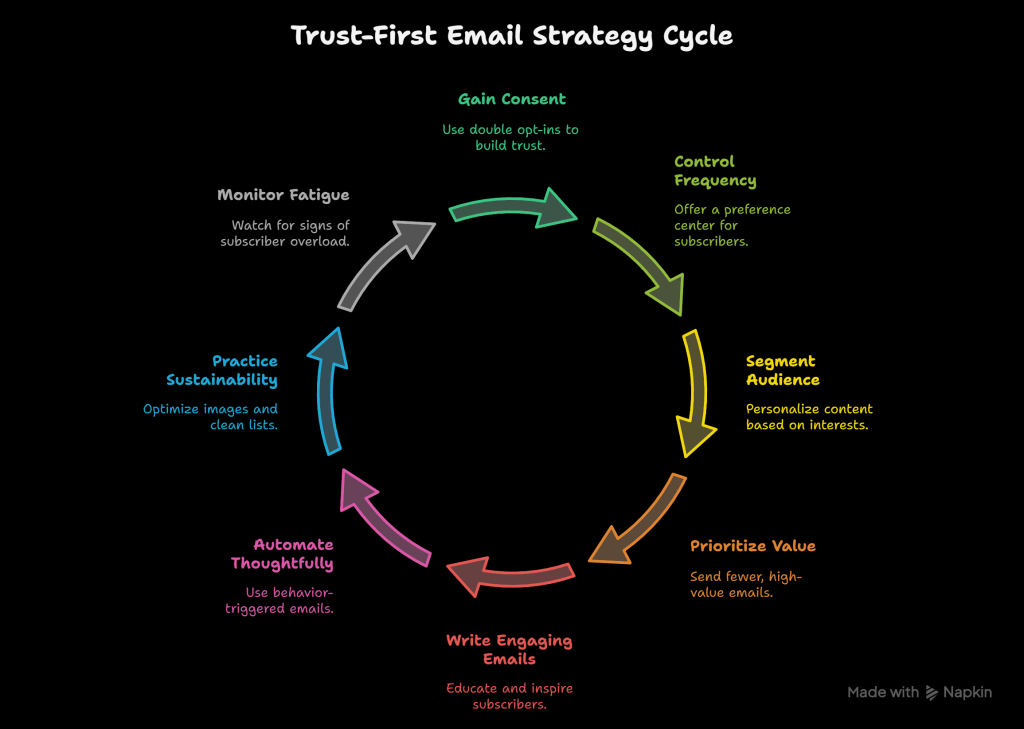
Final Reflections
For purpose-driven brands, email is more than just a communication tool; it’s a commitment to your audience.
Each email you send reflects your values, and every message is an opportunity to either build trust or break it.
By taking the time to respect your readers’ time, attention, and preferences, you create a space for real connection. You’re not just filling inboxes; you’re fostering lasting relationships built on transparency, respect, and mutual value.
When you approach email marketing with intentionality and genuine care, you reduce the risk of overload, create meaningful touchpoints, and ultimately make your messages stand out for all the right reasons.
In the end, it’s about more than just clicks and conversions. It’s about building long-term loyalty and becoming a brand that your audience can trust today and in the future.
👉 Ready to create email campaigns that reflect your mission and reduce subscriber fatigue?
Let’s talk →
- About the Author
- Latest Posts
I’m a dedicated member of the Cueforgood Internet marketing squad, and my passion for football runs deep, with Arsenal holding a special place in my heart. This club has been my source of inspiration and joy, shaping countless unforgettable memories throughout my life. Alongside my love for the beautiful game, I also embrace the excitement of gaming, adding an extra layer of thrill to my journey.
-
Email Marketing Without Fatiguing Conscious Consumers
by Charanjeev Singh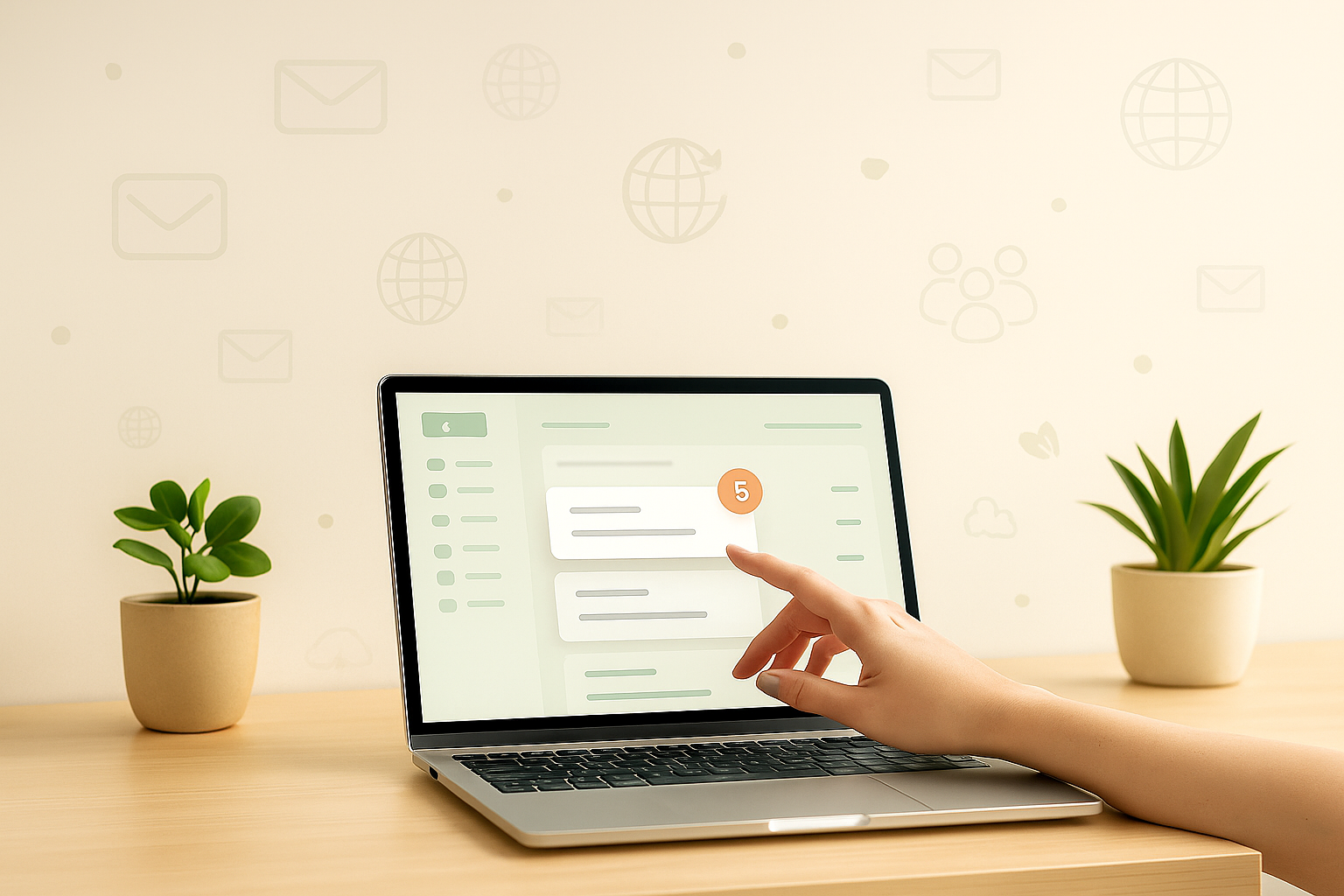
How to build trust, reduce inbox overload, and engage with intention Email marketing is a powerful tool. It lets you …
Continue reading “Email Marketing Without Fatiguing Conscious Consumers”
-
How to Market Vegan Products Without Preaching (or Losing Sales)
by Tapam Jaswal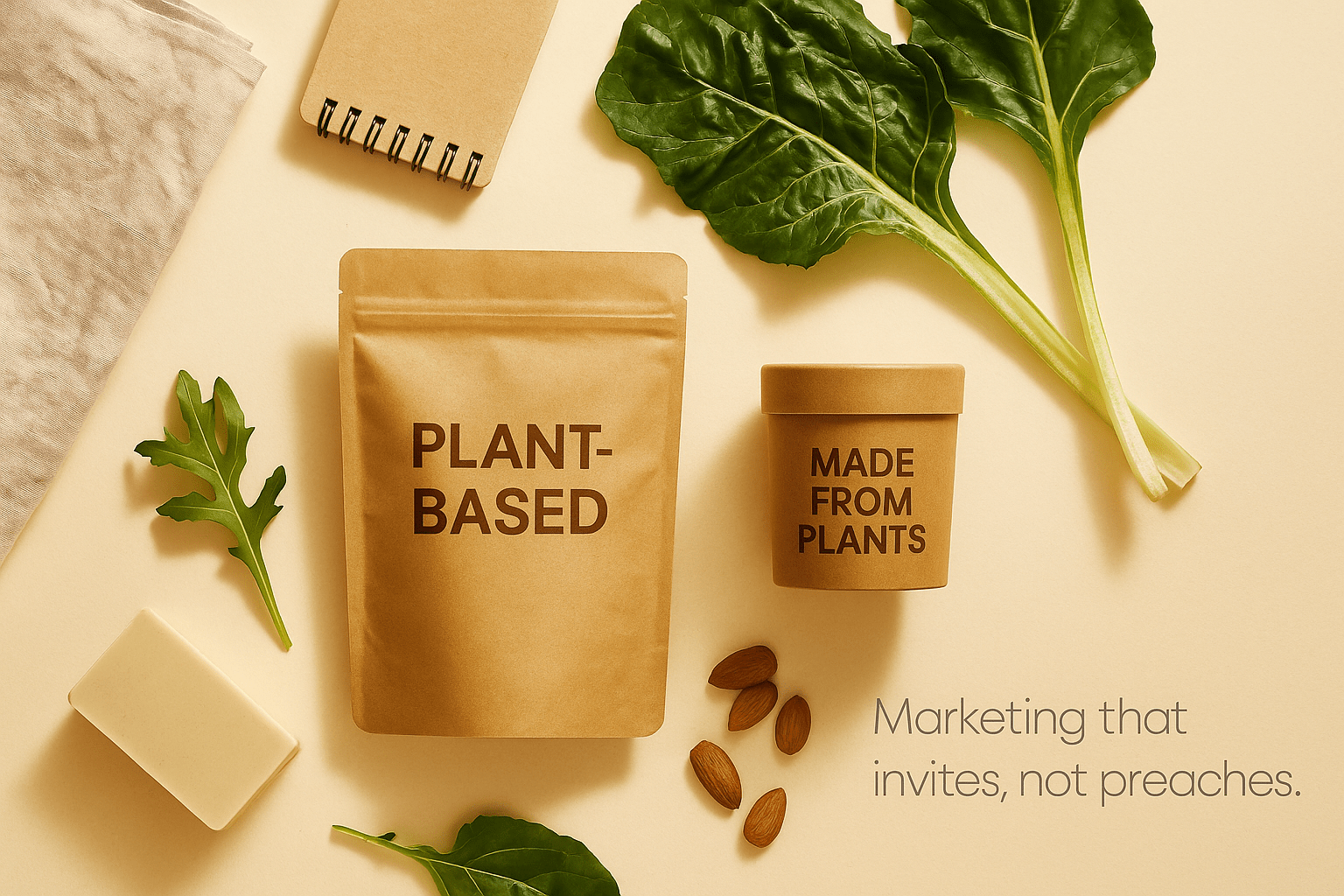
Marketing vegan products isn’t just about talking to people who already follow a vegan lifestyle. It’s also about connecting with …
Continue reading “How to Market Vegan Products Without Preaching (or Losing Sales)”
-
Vegan SEO: Optimizing Organic Visibility for Purpose-Driven Brands
by Tapam Jaswal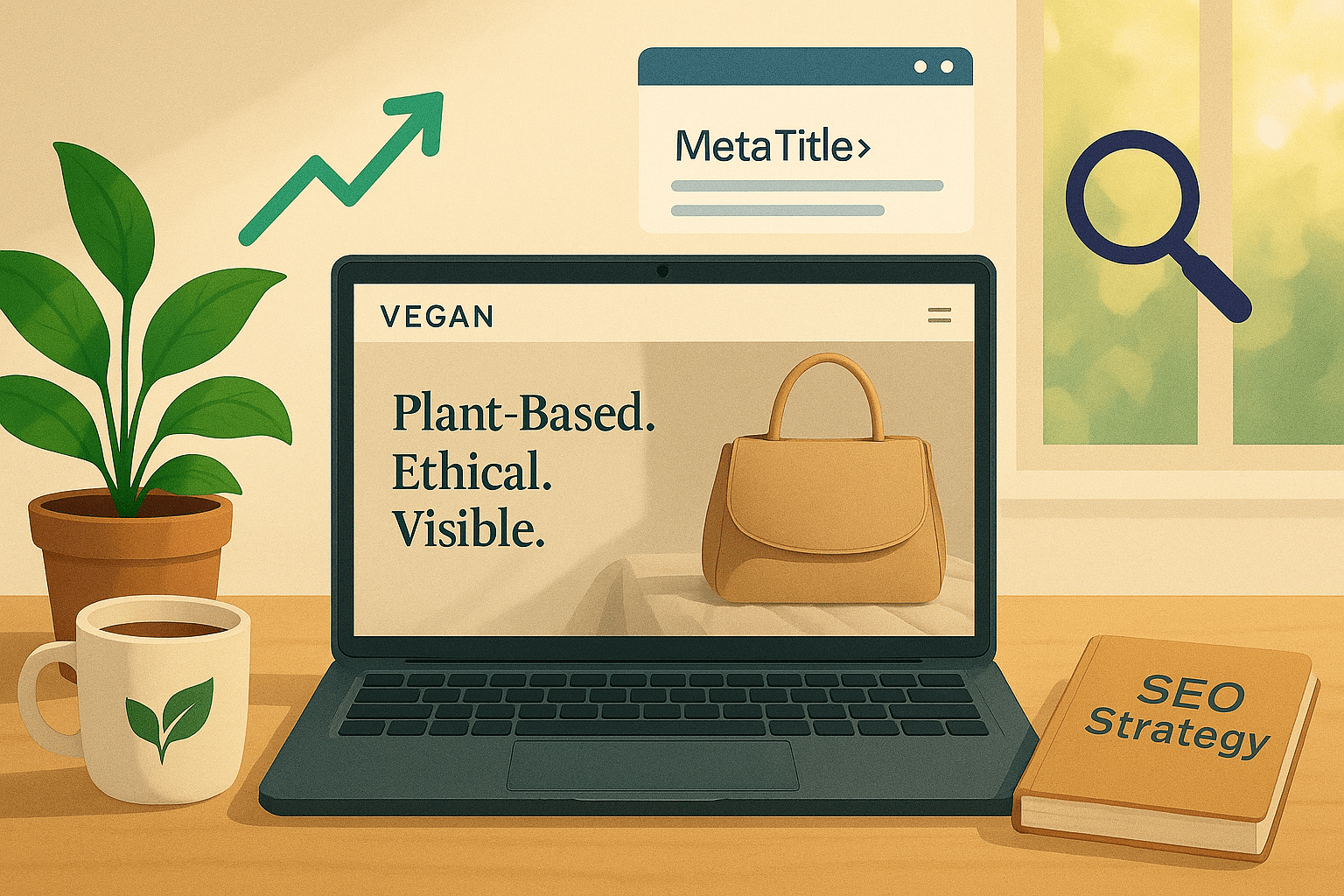
More people than ever are interested in vegan products and services. If you run a vegan brand, ensuring customers can …
Continue reading “Vegan SEO: Optimizing Organic Visibility for Purpose-Driven Brands”
-
Google AI Mode Explained: How It’s Reshaping Search and Content with Real Examples & Tips
by Tapam Jaswal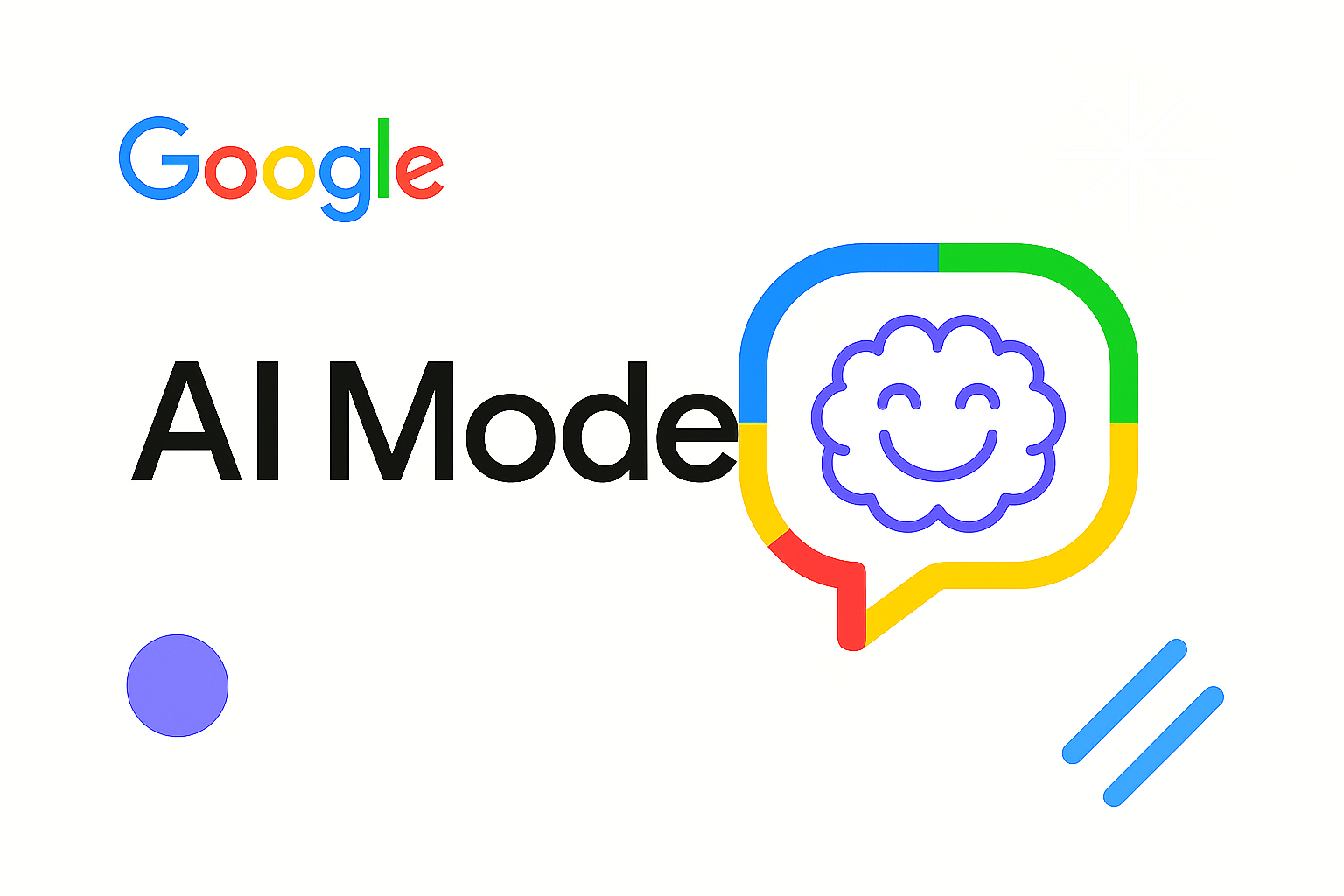
If you’re in SEO or content and have been watching Google’s changes, you already know: AI Mode isn’t a minor …
-
Jiva’s Organic Traffic Growth: 354% Surge in 6 Months | CueForGood
by Nida DanishSummary: Jiva’s efforts to empower smallholder farmers weren’t gaining the digital traction they deserved. With a strategic overhaul led by …
Continue reading “Jiva’s Organic Traffic Growth: 354% Surge in 6 Months | CueForGood”
-
What We Learned When We Switched From Disposable Tissues to Reusable Napkins
by Nida DanishAt CueForGood (CFG), we’ve embraced a refreshing change: reusable cloth napkins. While the switch may seem minor, it’s rooted in …
Continue reading “What We Learned When We Switched From Disposable Tissues to Reusable Napkins”





